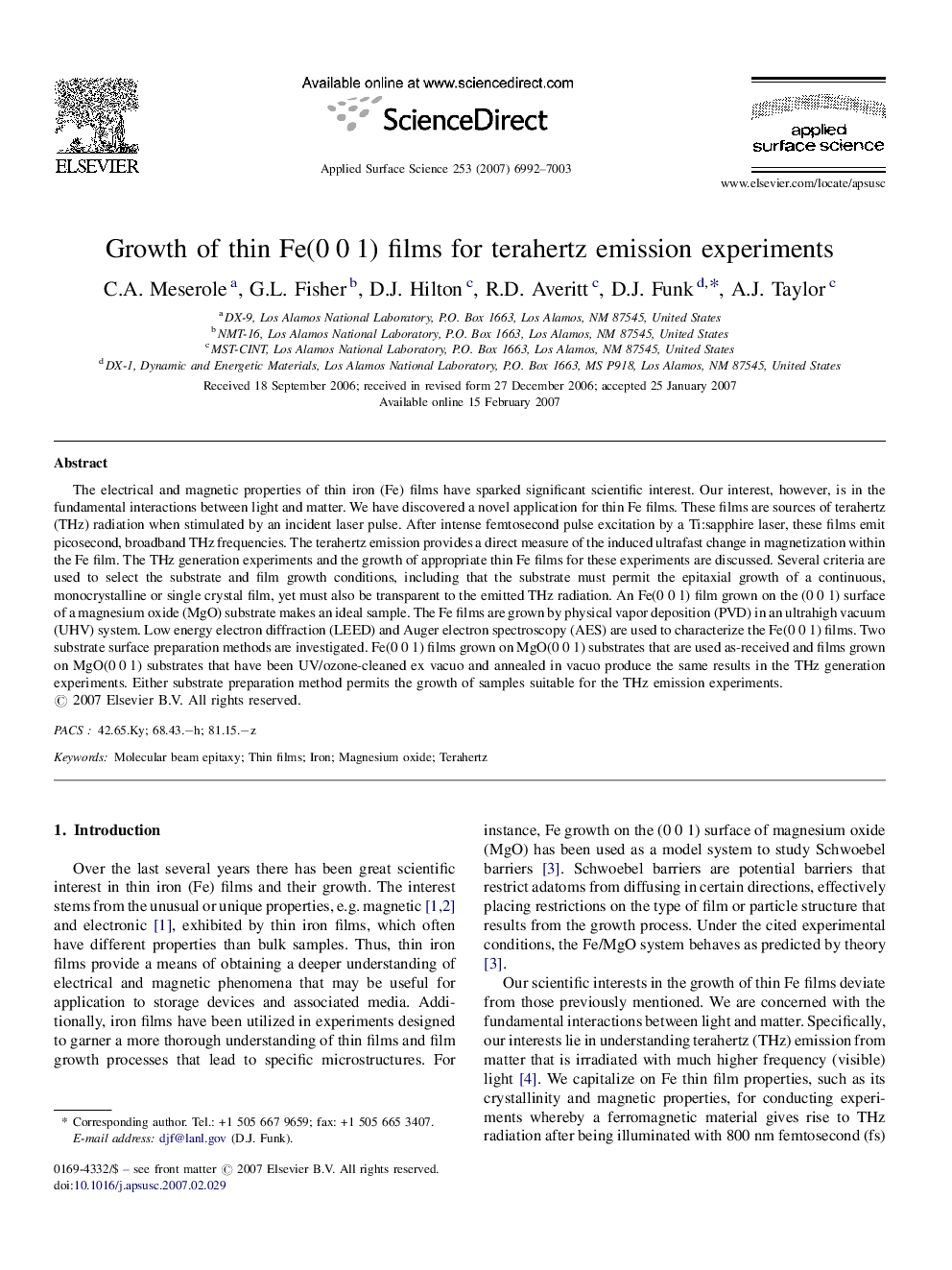| Article ID | Journal | Published Year | Pages | File Type |
|---|---|---|---|---|
| 5368406 | Applied Surface Science | 2007 | 12 Pages |
The electrical and magnetic properties of thin iron (Fe) films have sparked significant scientific interest. Our interest, however, is in the fundamental interactions between light and matter. We have discovered a novel application for thin Fe films. These films are sources of terahertz (THz) radiation when stimulated by an incident laser pulse. After intense femtosecond pulse excitation by a Ti:sapphire laser, these films emit picosecond, broadband THz frequencies. The terahertz emission provides a direct measure of the induced ultrafast change in magnetization within the Fe film. The THz generation experiments and the growth of appropriate thin Fe films for these experiments are discussed. Several criteria are used to select the substrate and film growth conditions, including that the substrate must permit the epitaxial growth of a continuous, monocrystalline or single crystal film, yet must also be transparent to the emitted THz radiation. An Fe(0Â 0Â 1) film grown on the (0Â 0Â 1) surface of a magnesium oxide (MgO) substrate makes an ideal sample. The Fe films are grown by physical vapor deposition (PVD) in an ultrahigh vacuum (UHV) system. Low energy electron diffraction (LEED) and Auger electron spectroscopy (AES) are used to characterize the Fe(0Â 0Â 1) films. Two substrate surface preparation methods are investigated. Fe(0Â 0Â 1) films grown on MgO(0Â 0Â 1) substrates that are used as-received and films grown on MgO(0Â 0Â 1) substrates that have been UV/ozone-cleaned ex vacuo and annealed in vacuo produce the same results in the THz generation experiments. Either substrate preparation method permits the growth of samples suitable for the THz emission experiments.
